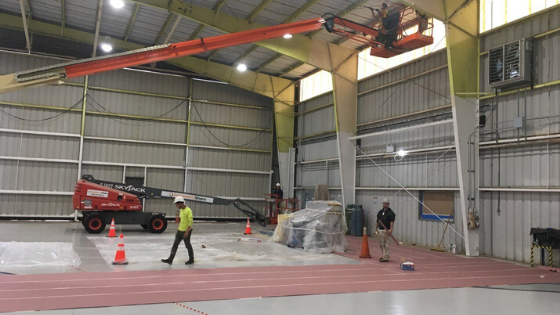 Coatings have an important role to play in maintaining health and safety in the workplace. Many coatings have performance qualities that make it easier to clean, disinfect, protect, or maintain facilities. More than ever, leaders are looking for ways to extend those benefits.
Coatings have an important role to play in maintaining health and safety in the workplace. Many coatings have performance qualities that make it easier to clean, disinfect, protect, or maintain facilities. More than ever, leaders are looking for ways to extend those benefits.
Over the last several years, more research has gone into coatings that can reduce the reproduction rate of bacteria and viruses. Some products can even destroy pathogens on a coated surface. This type of advance is encouraging, especially in high-risk settings like healthcare, education and childcare.
That said, coatings that directly interfere with microbes represent only a small fraction of coating products that can help you keep your workforce well. The best strategy takes into account the demands and hazards of your specific work environment.
Consider these coatings for enhancing your workplace safety:
1. Antimicrobial Coatings
Antimicrobial coatings have long been a part of the healthcare world. Antimicrobial components are usually found in the topcoat rather than the primer. This ensures maximum contact between microbes and the chemicals that can disrupt their activity.
Different antimicrobial coatings can be effective against fungi, viruses, bacteria, mold, and mildew. That means they can protect against unseen issues as well as those that are obvious.
Paint with antimicrobial qualities is often chosen for hospitals, eldercare facilities, schools, and daycare. An appropriate antimicrobial coating can also safeguard against mold and mildew that may fester in warm, humid environments.
This protects personnel against potentially serious respiratory complications.
It’s crucial to recall antimicrobial and microbicidal paints aren’t interchangeable:
- Antimicrobial: Inhibits growth of micro-organisms and prevents bacterial odor
- Microbicidal: Actively kills microscopic organisms in contact with the surface
Antimicrobial coatings are effective in maintaining indoor air quality. Indoor air can be many times more polluted than outdoor air, especially in tightly enclosed spaces and places with poor ventilation. That puts workers at risk of a variety of health issues.
Sick building syndrome is a general term for a situation where the occupants of a building experience chronic, widespread, yet low-level health symptoms associated with time spent in that building. Many experts believe that indoor air quality is a major contributor to this.
High rates of absenteeism and lowered productivity are often observed in unhealthy work environments. With that in mind, antimicrobial coatings promote health, safety, and efficiency.
2. Microbicidal Coating
The only true microbicidal coating available on the market today is Sherwin-Williams Paint Shield. Paint Shield is unique among coating products in that it actively kills five key pathogens.
Because Paint Shield’s marketing is based on its health claims, the product has been extensively tested under laboratory conditions. Studies demonstrated that Paint Shield destroys more than 99.9% of common pathogens including staph bacteria and E. coli.
Destruction of these and other pathogens is observed within two hours of exposure to a properly treated surface. What’s more, the protective effect can persist over a period of several years as long as the surface is properly maintained. That may add up to hundreds of infections prevented.
3. Intumescent Coating
In most modern workplaces, and especially in industrial facilities, there are physical threats as well as physiological hazards. Intumescent paint is a specialized coating that is inert at ordinary operating temperatures but reacts at high heat, generally around 400° Fahrenheit.
During a fire event, the coating swells and develops a char layer. By covering steel, it further strengthens structural members against damage. High quality intumescent coatings can expand to 100 times their original thickness.
Although it is most commonly used on metal, it is available for a range of other materials, including softwoods, hardwoods, fiberboard, chipboard, brick, stone, plaster, and concrete. This makes it suitable for a full spectrum of commercial retail, dining, and hospitality workplaces.
Doors, decking, countertops, paneling, cladding, matchboard, and even many floor systems can benefit from intumescent coatings. Different formulations are necessary for various surfaces, so help from professional painting contractors is essential.
4. Waterproof Coating
A combination of antimicrobial and waterproof coatings is advised in areas of high humidity, those near the sea, and anywhere subject to intense rains. Water seepage is a significant source of mold growth, which can damage structures and lead to the air quality issues noted above.
Waterproof coating must bond very closely to the substrate to be effective. Depending on the qualities of the substrate, this can mean the surface must be prepared carefully. Application must be even and uniform to mitigate against the possibility of trapping moisture in the structure.
A full-scale industrial or commercial painting plan should start by evaluating your needs. Your facility as a whole and its individual functional areas all present different safety concerns. By applying the right coatings to meet those challenges, you promote the overall well-being of your workforce. Combined with regular maintenance and a strong safety culture, wellness is greatly improved.






